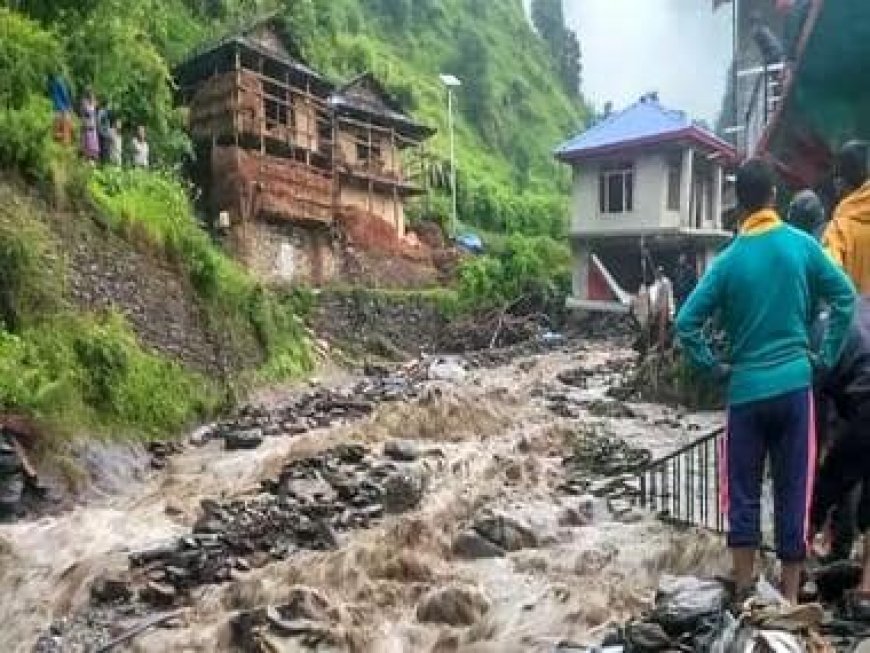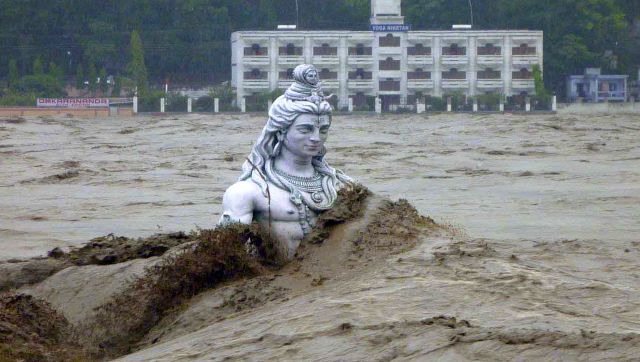What are flash floods that are wreaking havoc in Himachal Pradesh?
What are flash floods that are wreaking havoc in Himachal Pradesh?

After a prolonged summer and the scorching heat, parts of India, including Himachal Pradesh, are receiving heavy rain. In the hills of Himachal, the rains have wreaked devastation and misery with several houses and roads being damaged and even two people dying, with another person missing.
Authorities have stated that over 200 tourists were stranded near Aut in Himachal Pradesh’s Mandi district owing to flash floods in the area on Sunday. Sanjeev Sood, the deputy superintendent of police, was quoted as telling ANI, “Flash flood has hit the Bagipul area of Mandi district near Prashar Lake, with over 200 people including tourists and locals stranded near Baggi Bridge on Mandi Prashar Road.”
He further stated that operations were on to rescue those stranded and also evacuate people to safer places in the region.
But what are flash floods? Why do they occur? And why do experts believe that they will increase in the next few years.
Flash floods in Himachal Pradesh
Over the weekend, flash floods wreaked havoc in Himachal, from damaging houses to roads and much, much more.
The Mandi-Kullu national highway was closed after reports of flash flood from in Khoti Nala near Aut in Mandi district. Another flash flood in the Bagipul area near Prashar Lake led to over 200 people stranded near Baggi Bridge on Mandi-Prashar road.
An official notification added that the Mandi-Joginder Nagar Highway had also been shut. “The general public/tourists plying on these Highways are advised not to stay on the roads adjacent to mountains as there is a high risk of landslides/rock fall,” said the notification.
Several parts of Kangra city in Himachal were also waterlogged following incessant rainfall.
Officials said that two people drowned in the districts of Solan and Hamirpur owing to the flash floods in the area.
The State Emergency Operation Centre reported damage to houses and roads and even animal shelters. According to them, over a dozen vehicles were washed away in the flash floods.
India’s weatherman, India Meteorological Department (IMD), also issued an orange alert for the state for 26 June.

Flash floods, explained
Now that we have understood the damage that flash floods have caused, let’s take a closer look at what exactly is a flash flood. As the name suggests, the weather phenomenon is a specific type of flooding that occurs in a short time frame after a precipitation event. According to the US meteorological agency, the National Weather Service, flash floods are caused when rainfall creates flooding in less than six hours.
It often is caused by heavy or excessive rainfall and happens in areas near rivers or lakes, but it also can happen in places with no water bodies nearby.
Experts further explain that when more rainfall lands in an area than the ground can absorb, or it falls in areas with a lot of impervious surfaces like concrete and asphalt that prevent the ground from absorbing the precipitation, the water has few places to go and can rise very quickly.
UK’s national weather service states that flash flooding commonly occurs where rivers are narrow and steep, so they flow more quickly. They can occur in areas located near small rivers, since hard surfaces such as roads and concrete do not allow the water to absorb into the ground.
Flash floods can also take place even if no rain has fallen. For instance, after a levee or dam has failed, or after a sudden release of water by a debris or ice jam.
Flash flooding occurs so quickly that people are caught off-guard. Their situation may become dangerous if they encounter high, fast-moving water while travelling. If people are at their homes or businesses, the water may rise quickly and trap them, or cause damage to the property without them having a chance to protect the property.
Experts note that the best way to stay safe in a flash flood is to be aware of the danger and be ready to respond.
Also read: Monsoon Mayhem: THESE Indian states are experiencing severe rains
Causes of flash floods
Flash floods in India are often the result of a heavy or excessive rainfall. This is also because nearly 75 per cent of the total Indian rainfall is concentrated over just four months – June to September. As a result, the rivers witness a heavy discharge during these months.
Another reason for such a weather phenomenon is a cloudburst or thunderstorm.
Experts have also noted that depression and cyclonic storms in the coastal areas of Odisha, West Bengal, Andhra Pradesh, Karnataka, and Tamil Nadu also cause flash floods. Further, the states of Arunachal Pradesh, Assam, Himachal Pradesh, Uttarakhand, the Western Ghats in Maharashtra and Kerala are more vulnerable to flash floods caused by cloudbursts.
Weather experts have also stated that a rise in temperatures will lead to a rise in flash floods. They said that temperatures in the Himalayan region are projected to rise up to 2.6 degrees Celsius and also increase in intensity by 2-12 per cent by 2030s. This will result in increased flash floods events leading to large scale landslides.

Worst flash floods in India
India has a history of flash floods with perhaps the worst such incident taking place in 2013 in Uttarakhand. Between 13 and 17 June, the state received extremely heavy rainfall, leading to the melting of the Chorabari glacier and the eruption of the Mandakini river. The flash flood led to the death of more than 5,000 people.
The flooding also caused more than $3.8 billion in economic losses, according to a disaster assessment conducted by the World Bank and the Global Facility for Disaster Reduction and Recovery.
Kerala’s deadly 2018 floods were another instance of the weather phenomenon. Over 480 people died and another 15 went missing in the flash floods, which officials call the worst flooding in the southern state in nearly a century.
In 2021, the Rishiganga flash floods in Uttarakhand killed more than 200 people besides causing severe devastation in Reini and Tapovan areas of Chamoli district, where two hydel projects also bore the brunt.
Last year, Himachal also witnessed flash floods in July at the Sangla Valley in Kinnaur.
Jammu and Kashmir have also had two brushes with flash floods – one in 2010 and the other in 2014. A major cloudburst and heavy rainfall brought misery to 71 towns and villages in Leh and at least 255 people died. Four years later, almost 140 people died when incessant rain led to flash floods.
With inputs from agencies
Read all the Latest News, Trending News, Cricket News, Bollywood News,
India News and Entertainment News here. Follow us on Facebook, Twitter and Instagram.
What's Your Reaction?


























































